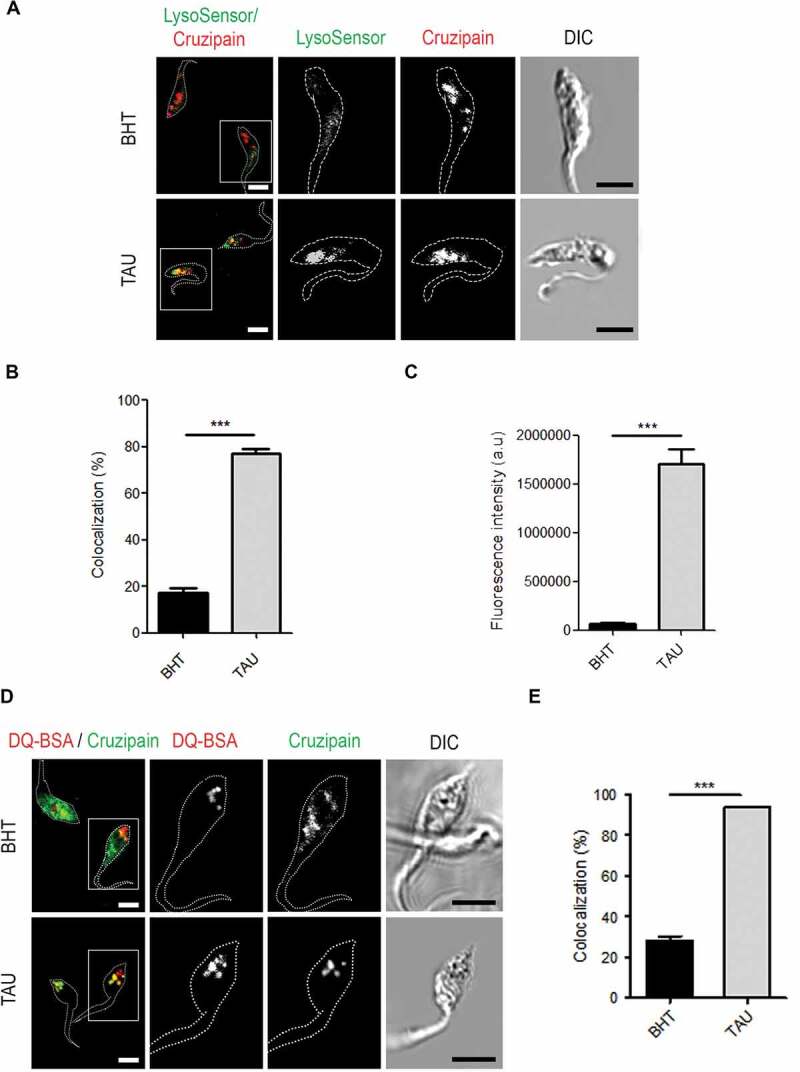Figure 3.

Induction of autophagy transforms reservosomes in hydrolytic compartments. (A) Variability of cruzipain-positive compartments acidity in epimastigotes (Y WT strain) exposed to the first stage of metacyclogenesis under optimal nutritional conditions or nutritional stress and stained with LysoSensor dye. Fluorescence images corresponding to this pH-sensitive dye were acquired using 1,000 ms exposure. Parasites’ boundaries are depicted by white dashed lines. Scale bars: 5 µm. (B) Quantification of colocalization degree of cruzipain with the acidic compartments stained with LysoSensor in relation to BHT/TAU treatment. Data are shown as mean ± error of two independent experiments. A total of 50 parasites per group for each experiment were quantified. P values were calculated using the Student 1-tailed unpaired t-test. (***) p ≤ 0.001. (C) Quantification of fluorescence intensity of LysoSensor according to the nutritional condition. Data are shown as mean ± error of two independent experiments. A total of 50 parasites per group for each experiment were quantified. P values were calculated using Student’s 2-tailed unpaired t-test. (***) p ≤ 0.001. (D) Immunofluorescence analysis of cruzipain distribution in relation to the hydrolytic marker DQ-BSA in epimastigotes (Y WT strain) induced to undergo autophagy (TAU) or not (BHT) during the first stage of metacyclogenesis. Parasites’ boundaries are depicted by white dashed lines. Scale bars: 5 µm. (E) Quantification of the colocalization degree between cruzipain-positive compartments with those compartments that have hydrolytic activity. Data are shown as mean ± error of three independent experiments. A total of 50 parasites per group for each experiment were quantified. P values were calculated using the Student 2-tailed unpaired t-test. (***) p ≤ 0.001
